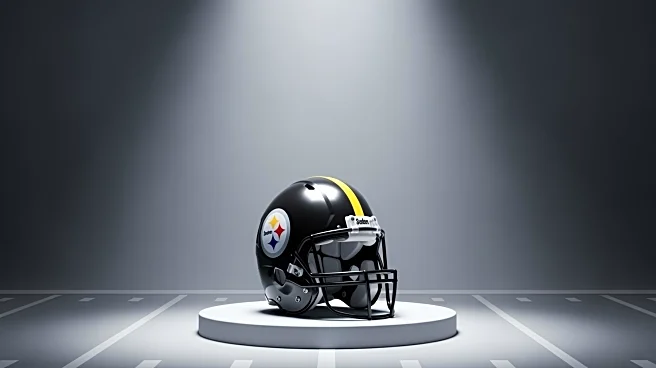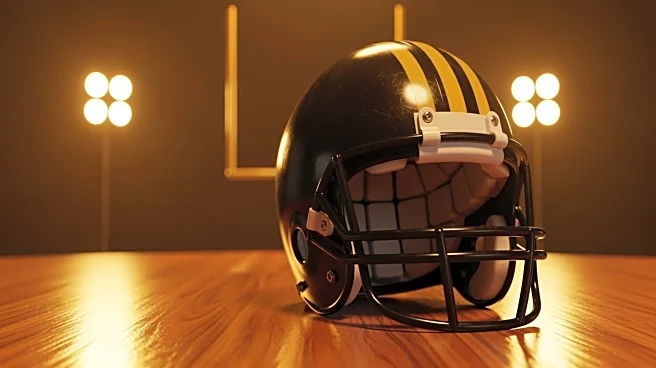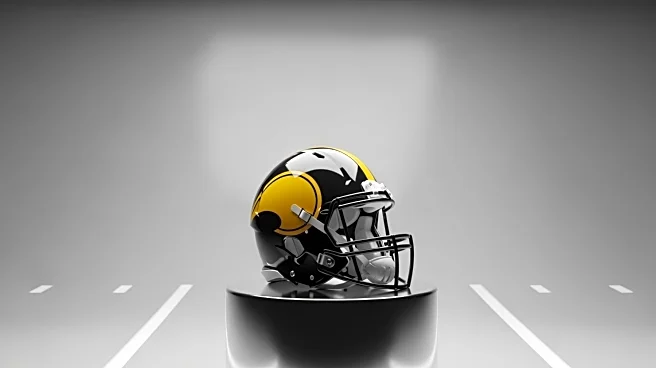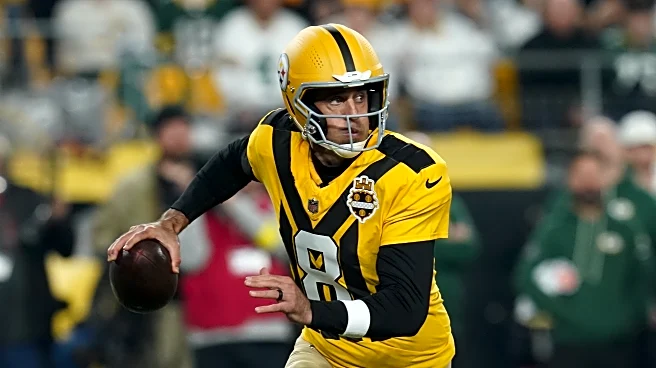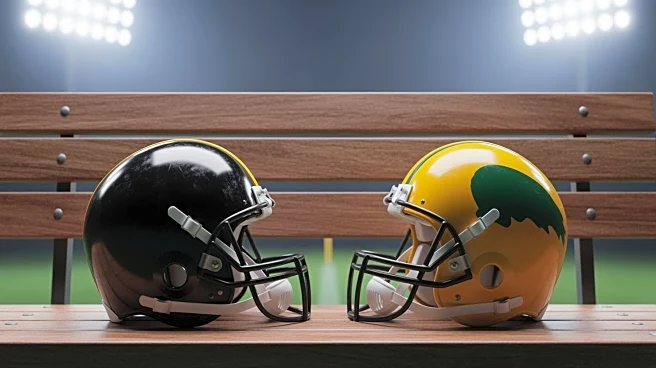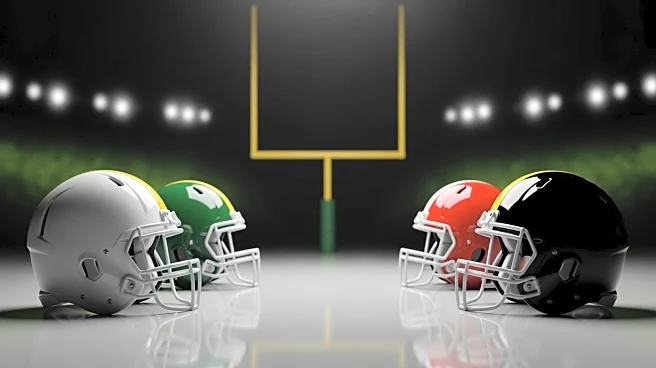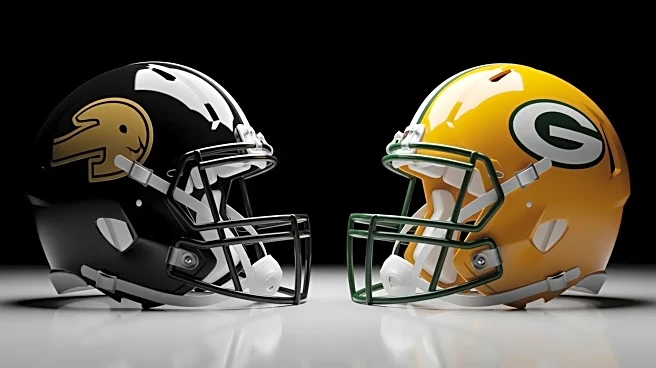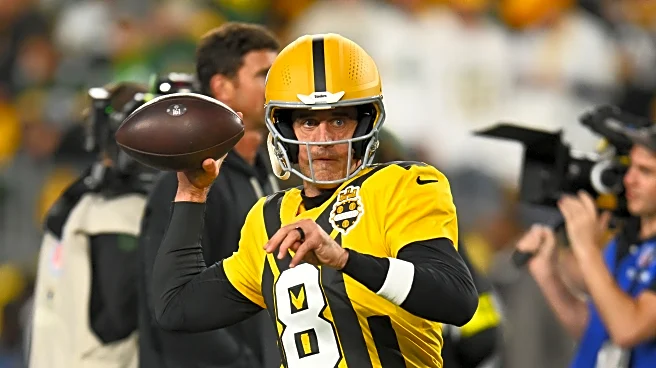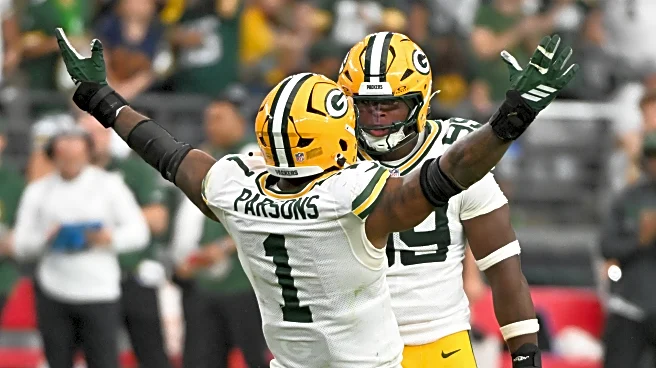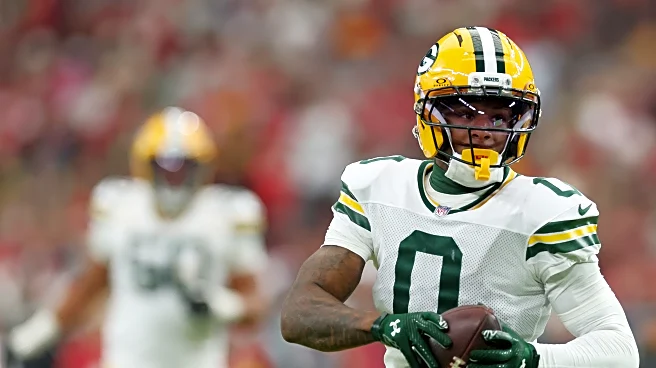What's Happening?
The Pittsburgh Steelers are under scrutiny for their decision to wear 1933 throwback uniforms during their Week 8 game against the Green Bay Packers. The uniforms feature gold jerseys with black stripes,
large white block letters, and the City of Pittsburgh crest. The helmets have a gold matte finish with a gray facemask and a black stripe. Fans have expressed strong opinions on social media, with many criticizing the aesthetic and suggesting that the historical design should remain in the past. Despite the backlash, the Steelers aim to honor their connection to the city and their founding year.
Why It's Important?
The controversy surrounding the Steelers' throwback uniforms highlights the challenges teams face when balancing tradition with modern expectations. While the uniforms are intended to celebrate the team's history, the negative reception underscores the importance of aligning aesthetic choices with fan preferences. This situation could impact the team's brand image and fan engagement, as well as influence future decisions regarding uniform design. The Steelers' choice also reflects broader trends in sports marketing, where historical elements are used to strengthen team identity.
What's Next?
The Steelers will continue to monitor fan reactions and media coverage to gauge the impact of their uniform choice. The team's performance against the Packers could influence public perception and future decisions regarding throwback uniforms. Additionally, the Steelers may consider adjustments to their marketing strategy to address the criticism and enhance fan engagement. The outcome of the game could also affect the team's standing in the AFC North, adding pressure to perform well in these uniforms.
Beyond the Headlines
The debate over the Steelers' throwback uniforms raises questions about the role of nostalgia in sports branding and the potential risks of deviating from established aesthetic norms. This situation may prompt other teams to reconsider their approach to historical designs, balancing tradition with contemporary tastes. The Steelers' experience could serve as a case study for sports marketers, highlighting the importance of understanding fan preferences and the impact of visual identity on team reputation.
